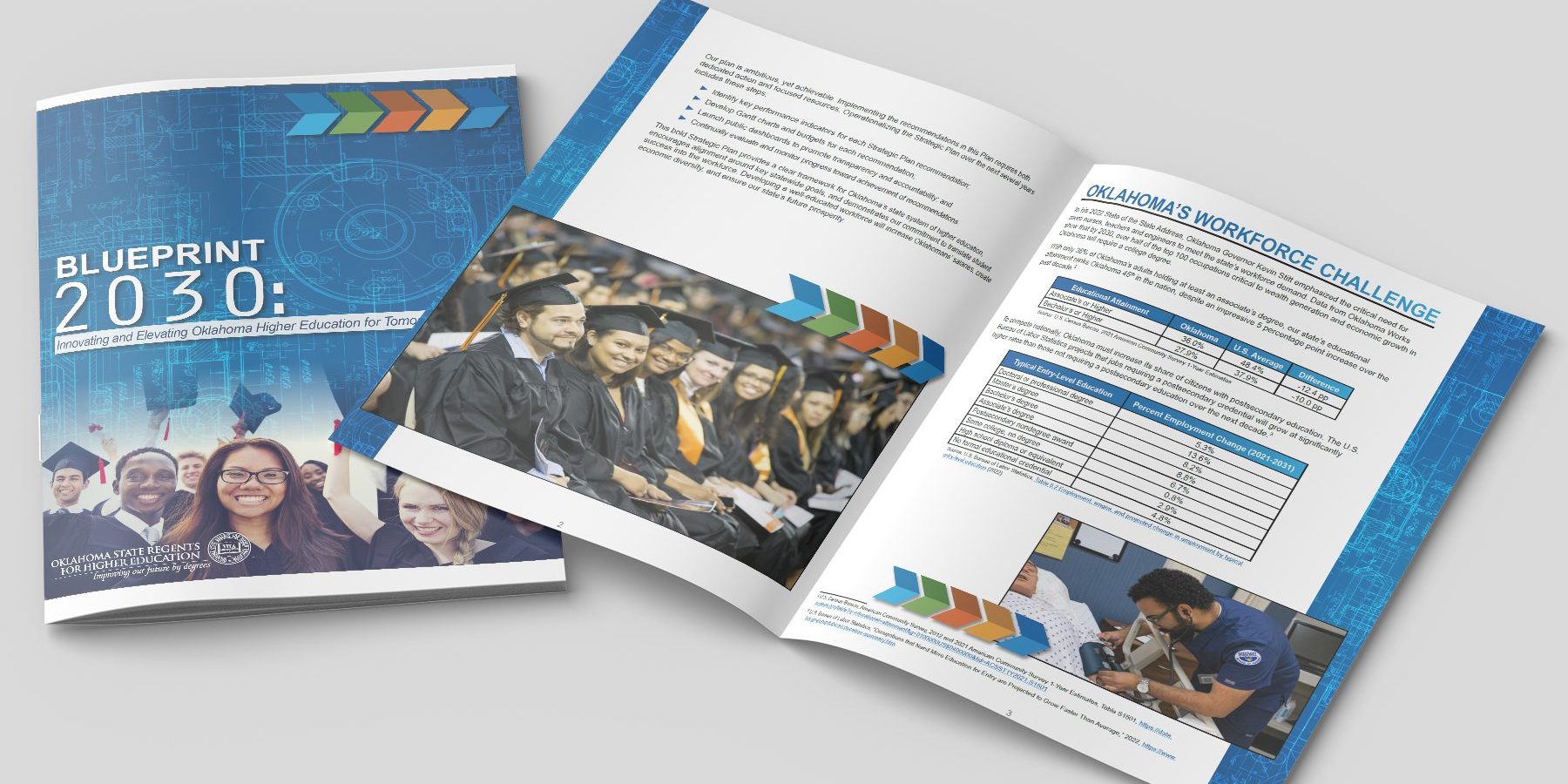
The role our state system of higher education plays in meeting the state’s workforce development goals has never been more vital. Our public colleges and universities educate the state’s teachers, nurses, doctors and engineers. Our graduates drive innovation, build companies, enrich our communities, and strengthen our state’s workforce in an increasingly knowledge-based, global economy.
With just 27.9% of Oklahomans holding a bachelor’s degree, our state has a low educational attainment rate compared to others. This is a disadvantage in attracting new businesses to the state and retaining existing businesses that generate high-paying jobs and fuel sustained and diversified economic expansion.
To address our state’s workforce challenge, the Oklahoma State Regents for Higher Education (State Regents) developed this Strategic Plan to guide the state system of higher education through 2030.

Blueprint 2030
"Across the nation and here in our state, businesses are struggling to find the employees they need. We need more nurses, more teachers, more engineers… Our state’s workforce needs to grow at the same pace as our businesses.
That means we have to be bold. Our entire education system must be aligned and motivated to meet this challenge head on."
— Gov. Kevin Stitt, 2022 State of the State Address
The plan is anchored by four fundamental goals:
- Produce workforce-ready graduates
- Grow the student pipeline
- Focus on student success
- Improve system efficiency and effectiveness
Several strategies will drive the state system in achieving our goals. These include:
- Align higher education programs with workforce demand, with a goal to produce 100,000 degrees and other credentials in STEM and critical occupations by 2030.
- Develop a robust statewide communication and outreach plan to engage the business community.
- Connect students to the workforce through increased availability of engaged learning opportunities.
- Increase FAFSA (Free Application for Federal Student Aid) completion among high school seniors.
- Simplify the college admission process for students and promote seamless transfer of credits among state system institutions.
- Develop and implement a systemwide plan to identify, re-engage and support Oklahoma’s adult learners.
- Strengthen online education offerings and use digital tools to improve student success and augment the traditional learning experience.
- Support institutional consolidations and collaborations.
- Establish a shared services center to reduce institutional administrative costs and maximize efficiencies.
- Incentivize institutional performance through the development of a new performance funding formula.
Our plan is ambitious, yet achievable. Implementing the recommendations in this Plan requires both dedicated action and focused resources. Operationalizing the Strategic Plan over the next several years includes these steps:
- Identify key performance indicators for each Strategic Plan recommendation.
- Develop Gantt charts and budgets for each recommendation.
- Launch public dashboards to promote transparency and accountability.
- Continually evaluate and monitor progress toward achievement of recommendations.
This bold Strategic Plan provides a clear framework for Oklahoma’s state system of higher education, encourages alignment around key statewide goals, and demonstrates our commitment to translate student success into the workforce. Developing a well-educated workforce will increase Oklahomans’ salaries, create economic diversity, and ensure our state’s future prosperity.
